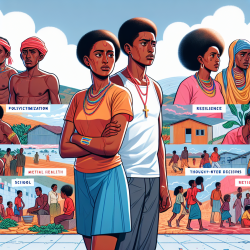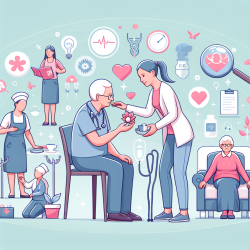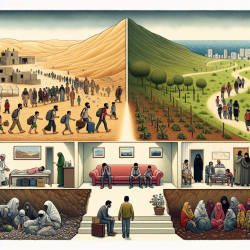Introduction
Polyvictimization, the experience of multiple forms of violence, is a critical issue affecting adolescents worldwide. The study "Polyvictimization and Adolescent Health and Well-Being in Ethiopia: The Mediating Role of Resilience" explores the impact of polyvictimization on Ethiopian adolescents' mental and physical health, emphasizing the role of resilience. This blog post aims to help practitioners enhance their skills by applying the research findings or encouraging further exploration in this area.
Key Findings
The study analyzed data from over 4,100 adolescents in Ethiopia, revealing that polyvictimization is prevalent, with half of the girls and over half of the boys experiencing multiple forms of violence. The research found that polyvictimization is associated with worse mental health outcomes for both genders, although the impact was more pronounced among boys. Interestingly, polyvictimization did not significantly affect physical health, highlighting the need for further investigation into this area.
Resilience as a Mediator
Resilience, the ability to adapt positively despite adversity, was found to mediate the relationship between polyvictimization and mental health among girls. This suggests that enhancing resilience could be a valuable strategy for mitigating the negative mental health effects of polyvictimization. However, resilience did not mediate the relationship for boys, indicating potential gender differences in how resilience operates.
Implications for Practitioners
Practitioners working with adolescents in Ethiopia and similar contexts should consider the following strategies:
- Focus on Resilience Building: Implement programs that strengthen resilience, particularly among girls, to help buffer against the adverse effects of polyvictimization.
- Gender-Specific Interventions: Recognize the different ways boys and girls experience and are affected by polyvictimization, tailoring interventions accordingly.
- Comprehensive Violence Prevention: Develop holistic approaches that address multiple forms of violence, considering cultural and societal contexts.
Encouraging Further Research
While this study provides valuable insights, there is a need for further research to explore the nuances of polyvictimization and resilience. Future studies could investigate the long-term physical health impacts, the role of resilience in boys, and effective intervention strategies in low- and middle-income countries.
Conclusion
Understanding the complex interplay between polyvictimization, resilience, and adolescent health is crucial for developing effective interventions. By focusing on resilience and considering gender-specific needs, practitioners can better support adolescents in overcoming the challenges posed by polyvictimization.
To read the original research paper, please follow this link: Polyvictimization and Adolescent Health and Well-Being in Ethiopia: The Mediating Role of Resilience.










